[social_warfare]
With more than 50% of world’s tiger population found on the Indian subcontinent, it’s no surprise that when thinking about what animals live in India, the first one that comes to mind is the iconic big cat!
Second only to southern and east Africa, India is one the world’s premier safari destinations with more than 120 national parks and wildlife sanctuaries within its borders. It’s also the only place in the world where you can see lions, tigers and bears living side by side.
India is home to a variety of iconic wildlife species like elephant, leopard, rhino, gharial, gaur, lion-tailed macaque, and king cobra. Let’s take a detailed look at each of them to help you with your efforts of spotting them in the wild!
10 incredible Animals To Look For On Your Safari In India
Bengal Tiger
Bengal tigers are one of the most plentiful tiger species in the world. This is thanks to incredible conservation measures put in place by Indian authorities, where they are the country’s national animal. They are very large cats, with a full-grown adult weighing up to 250kg.
Tigers live solitary lives, except for mothers nursing young cubs. Male Bengal tigers don’t assist with the raising of cubs at all, and are extremely territorial.

A Bengal tigress gives birth to a litter of between 2 and 6 cubs at a time on average, and they live with their mother until they’re around 3 years old. Cubs start hunting on their own at 1.5 years old, and ideal prey animals include deer, water buffalo and wild boar.
The best time to see a tiger while on safari is in the early morning or evening hours, as this is when they are most active.
Sloth bears
Sloth bears are quite distinct thanks to their shaggy black coats and overall dishevelled demeanour. They are easily spotted, even while driving quickly through one of India’s national parks.
They generally lead solitary lives and are predominantly nocturnal. That being said there is usually a very high chance of seeing one while on a guided safari.

Sloth bears have long lower lips and are missing their two front teeth. This makes it easier for them to eat their food, using a sucking action.
They use their sickle-shaped claws to dig into the ground and stir up termite/ant nests before sucking them out. Aside from insects, sloth bears feast on a variety of flowers and fruits.
They grow to around 150-200kg at full maturity. Female sloth bears raise young on their own, and they are very nurturing towards their babies. They are one of few bear species to carry their young on their soft, shaggy backs until around 6-9 months old.
Lions
The second largest predator found in India is the lion. More specifically, a subspecies known as the Asiatic lion, which is native to the Indian subcontinent.
Within India, Asiatic lions can only be found in Gir National Park. They are social animals that often live in ‘prides’ of 3-10 individuals. This is usually 1 or 2 males, a group of females and their cubs.
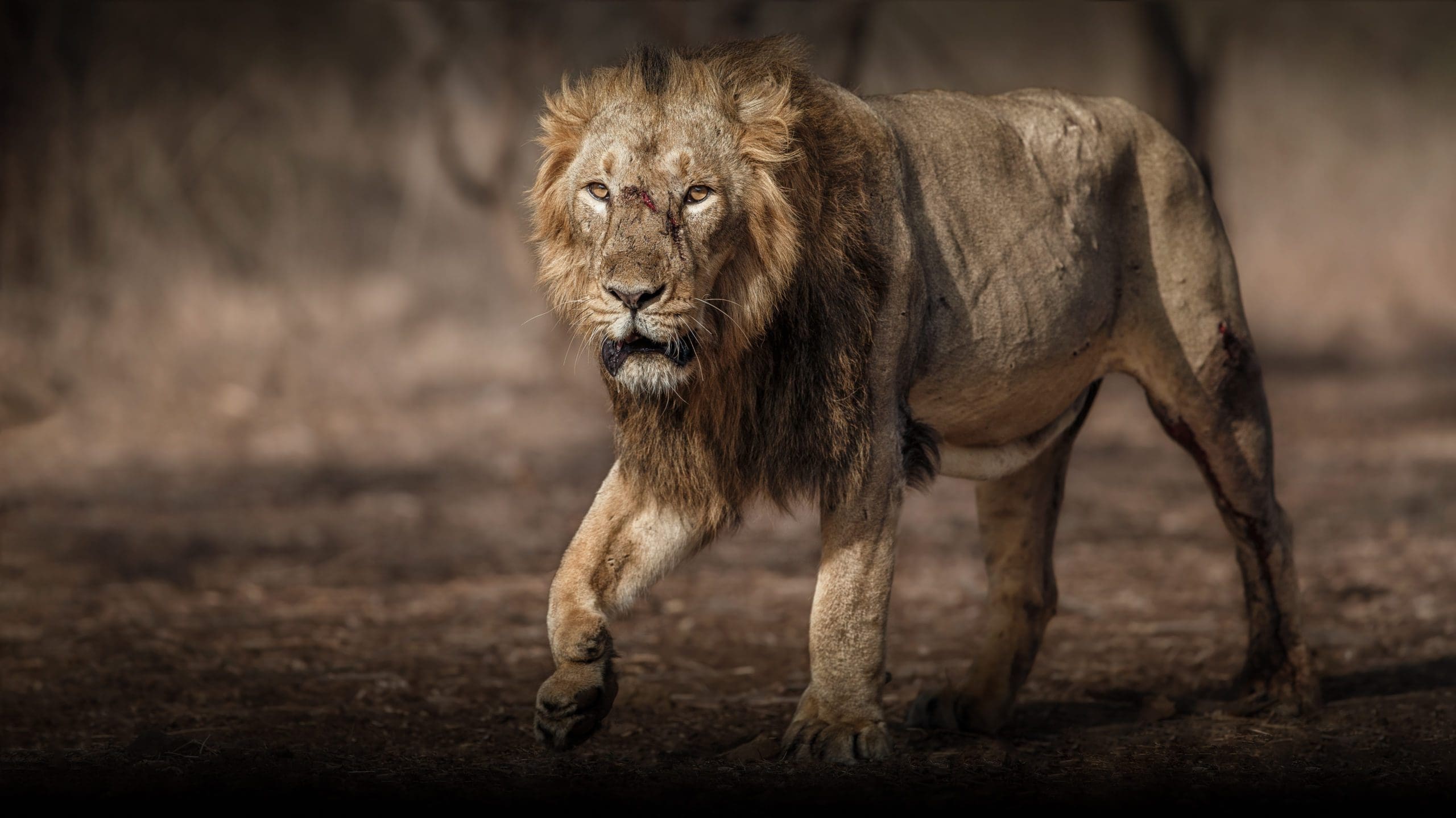
Stereotypical for lions, the females do the majority of the hunting and work together to bring down large prey like water buffalo and chital deer. Males are known to get involved with hunting, but usually spend the majority of their time patrolling the boundaries of their territory and/or sleeping under a shady tree.
When compared to their African counterparts, Asiatic lions are a smaller built and weigh about 150-200kg as adults. They also have a few distinctive features, most notably being the size of a male’s mane, which is much darker, shorter and allows their ears to be visible.
Elephants
Elephants are greatly respected in the Indian culture because of their close links to Hinduism.
Generally Asian elephants are smaller than African elephants, but are still impressive animals. Large bulls weigh around 5 tonnes when fully mature.
The Indian elephant’s most distinctive features are its smaller-than-usual ears, and rounded, boney protrusions on their foreheads. Often times, females don’t grow any tusks.

You can see elephants in almost any of India’s national parks. They live in family herds of up to 100 individuals, led by the largest female in the herd – the matriarch.
Elephants are very intelligent, and possess and incredible memory. They live for about 60-75 years, which is the same as the average life expectancy for a human.
They spend most of their lives eating, and their diets are made up of leaves, roots, and various fruits like wood apple, bananas and mangoes.
Leopards
Second only to the tiger, the leopard is one of the most sought after sightings while on safari in India.
The Indian subspecies can also be found as far as Nepal and Pakistan, and are famous for their striking appearance. Their darker coats, and large spots paint an incredibly beautiful picture.
Indian leopards are often considered to be the most beautiful of all leopard subspecies. India is also home to a healthy population of black leopards – an almost mythical figure, made famous by Rudyard Kipling’s The Jungle Book.
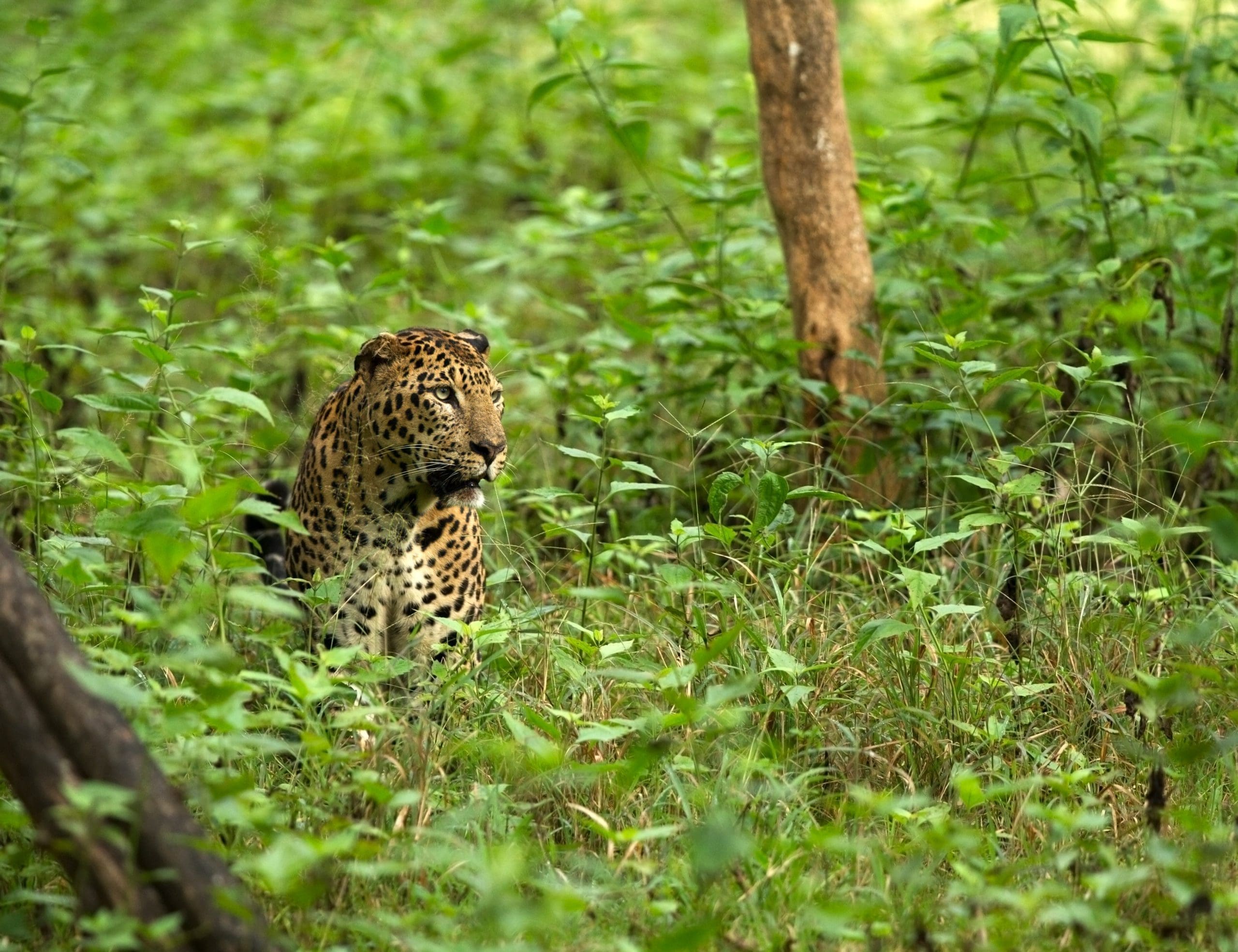
Despite their illusive nature, their is quite a high chance of seeing a wild leopard while on a guided safari in India. They are solitary cats and are most often spotted sleeping on the branch of a tree.
Relatively small for ‘big cats’, an adult leopard only weighs around 50kg. However their size does not hamper their hunting ability, if anything it enhances it.
They are incredibly agile and fast predators, able to reach speeds of more than 60km per hour. Their preferred prey items are langur monkeys, sambar deer and young water buffalo.
Rhino
Synonymous with all rhino subspecies, the Indian Rhinoceros is a massive, solidly built animal also known as the Greater One-horned Rhinoceros.
There are a few noticeable differences between Indian and African rhinos. Their thick grey skin is like multi-layered armour. While their singular horn usually grows to between 15 and 60cm.
They are a heavy species with adults tipping the scales at more than two tonnes.
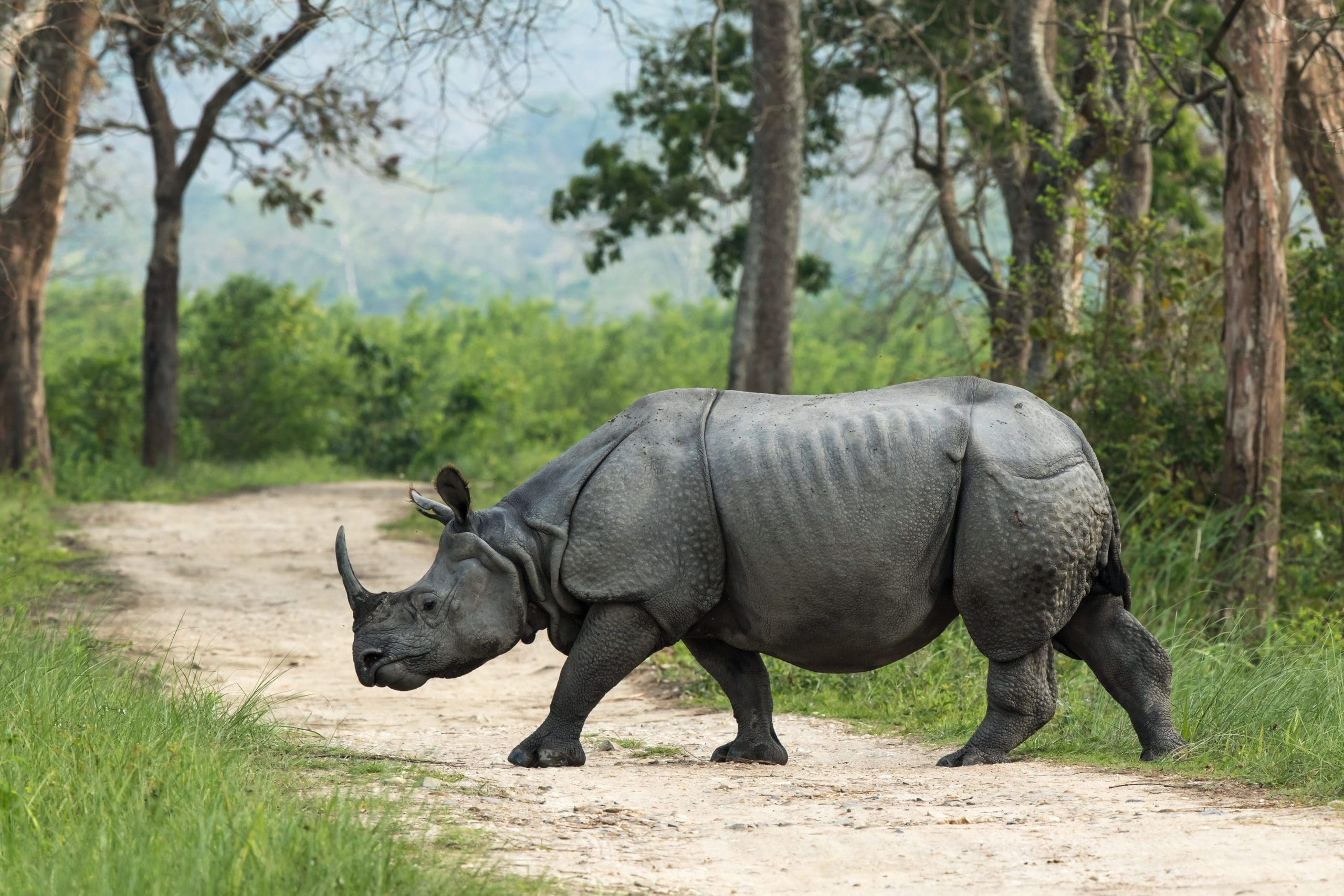
Don’t let their size fool you, Indian rhinos are fast and have been recorded running at nearly 45km per hour.
Their diet primarily consists of grasses, leaves, and fruit. While known for being temperamental, rhinos are generally placid unless provoked.
Unfortunately, poaching has decimated wild populations and today rhinos are one of the most critically endangered animals in India.
Gharials
One of the more unique animal’s found in India is the Gharial, also known as the fish-eating crocodile.
A mature gharial can grow up to 5 meters in length and weigh over 1 tonne. They are easily recognised thanks to their long, thin snouts, which wield more than 100 sharp teeth.
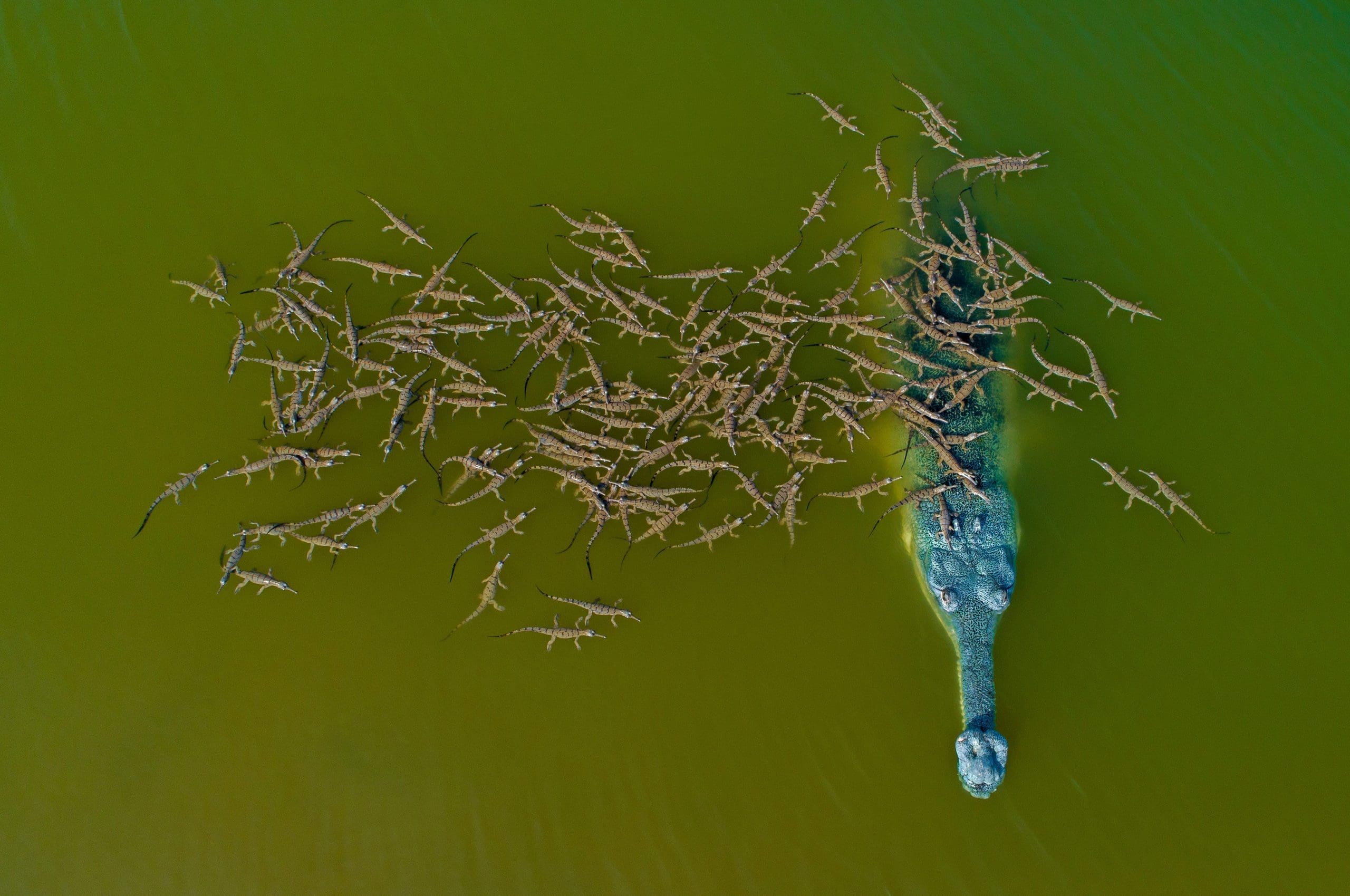
Hatchling gharials stay with their mothers for several weeks before being venturing off on their own.
As their name suggests, gharials primary eat fish, largely due to they slender jaws not being able to keep hold of larger prey. Baby gharials also feed on frogs, crustaceans and small insects.
Gharials are found in various Indian rivers including the Chambal, Girwa, and Son Rivers. They spend most of their time in deeper water and creep out onto the riverbank to warm up in the sun.
Unfortunately, they are another species that finds itself with a critically endangered status.
Gaur
The Indian Bison, or Gaur, is the largest bovine species ever recorded. They are easily spotted due to their massive, muscular body, dark fur, and large horns.
The Gaur is one of the heaviest animals in India, growing to more than 1 and a half tonnes.

Typical for bovine species, they can be quite unpredictable and aggressive at times, and will not hesitate to use their horns when threatened. When self-driving through any national park in India, its important to keep a safe distance.
Gaurs are commonly seen in Nagarhole, Periyar, and Kaziranga National Parks.
Unfortunately, they are listed as a vulnerable species with an estimate of 25,000-34,000 gaur individuals reported in the world.
Lion-tailed Macaques
Found only in the rainforests of India’s Western Ghats region, Lion-tailed Macaques are named so thanks to their bare tails with pom-pom like balls of fur on the end. Similar to a lion’s tail.
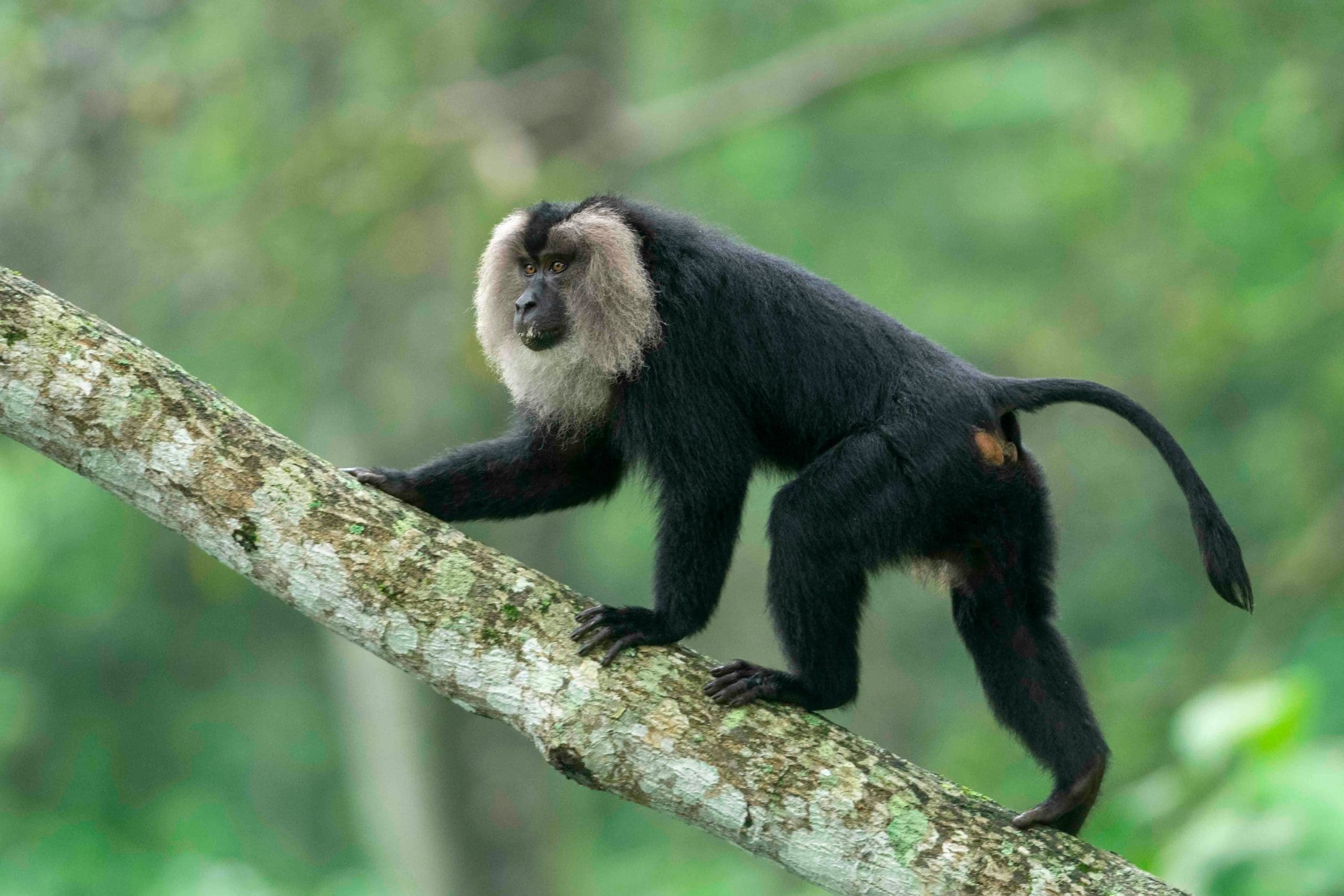
They are a small species, quite shy and timid. They generally try to avoid humans as much as possible.
They have really large cheeks, which funnily enough, can store the same amount as their stomachs! This adaptation means they never have to sacrifice a meal when needing to make a sudden escape from predators.
King Cobra
One of the deadliest animals in India, is the notorious King Cobra.
The largest venomous snake on Earth, the King Cobra averages at a length of 4 metres. Adults are known to be able to look a grown man dead in the eye when stood up in their typical cobra pose.
As size and age are normally synonymous with reptiles, it goes without saying that these snakes live a long time. They are one of the longest living snake species with an average life span of 20-25 years in the wild.
Aside from their shear size and unnerving demeanour, King Cobras have an even more ominous characteristic. Their preferred prey items are other snakes! Mainly rat snakes, pythons or smaller colubrids, but nothing is off the menu. These behemoths have regularly been seen cannibalising other cobras!
Female King Cobras build nests for their eggs, but play no part in raising the young. As soon as the babies are born, the mother is off. They build intricate nests, and male cobras are even known to linger in the vicinity to help protect the unborn hatchlings.
Deforestation and human-conflict has led King Cobras to a threatened status. They often times live in close proximity with humans and most choose to kill rather than take a chance letting the serpents pas by.
